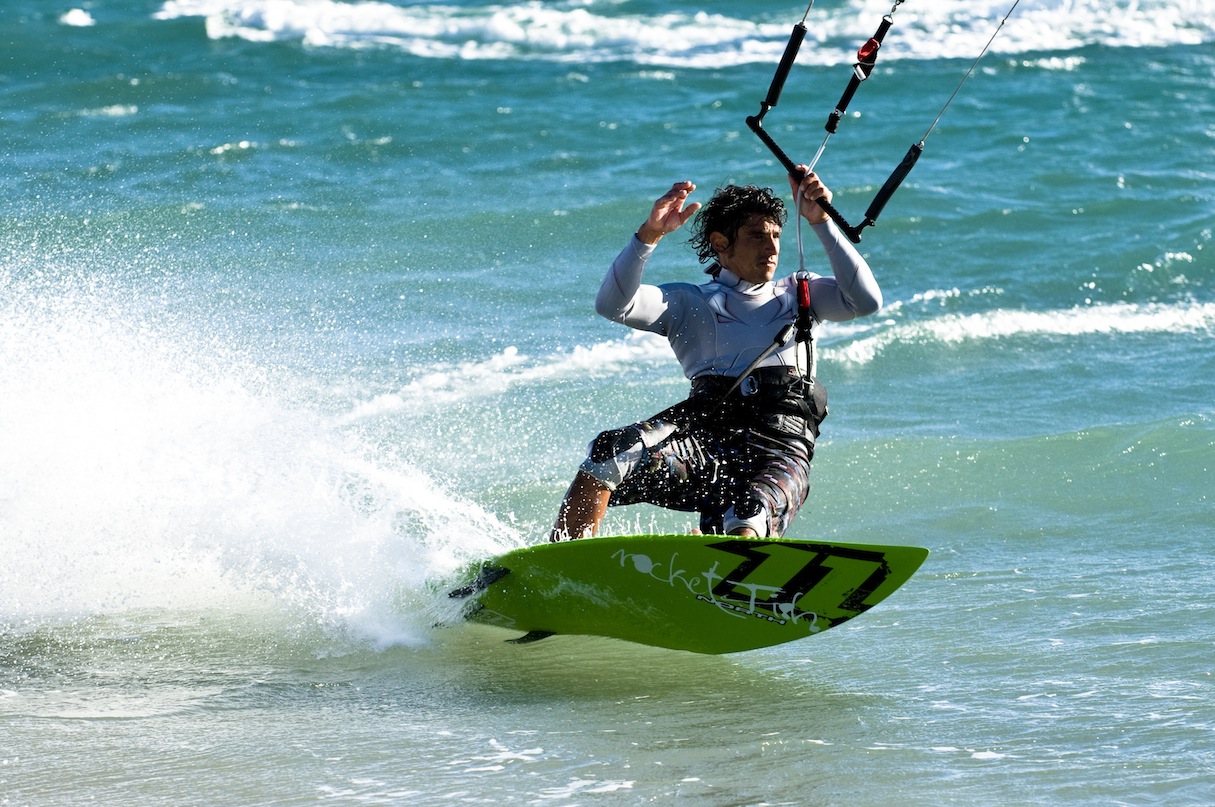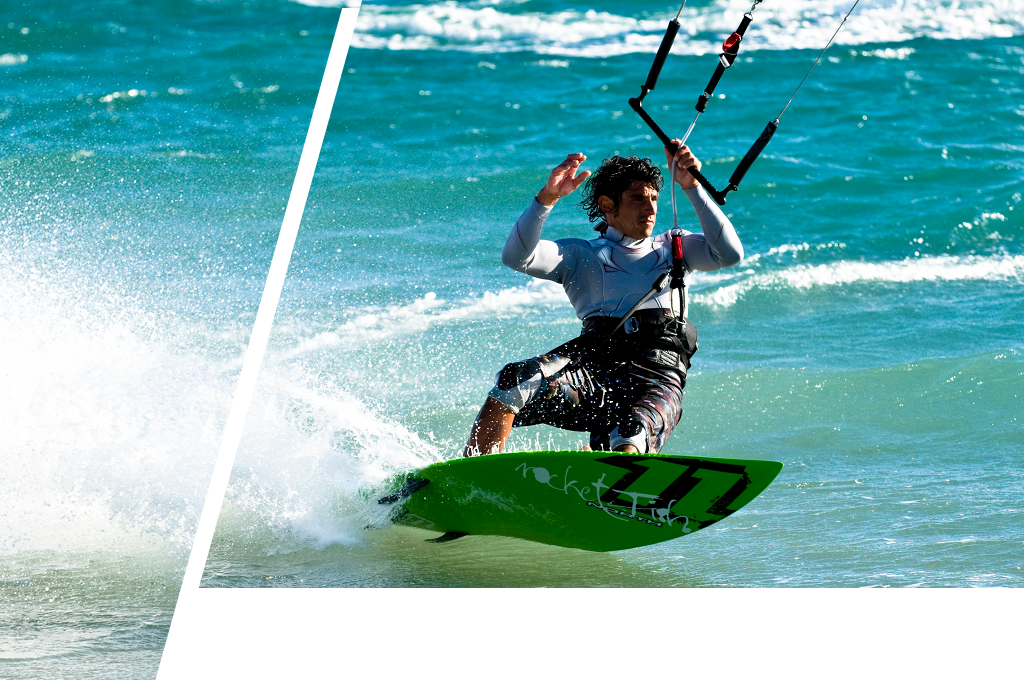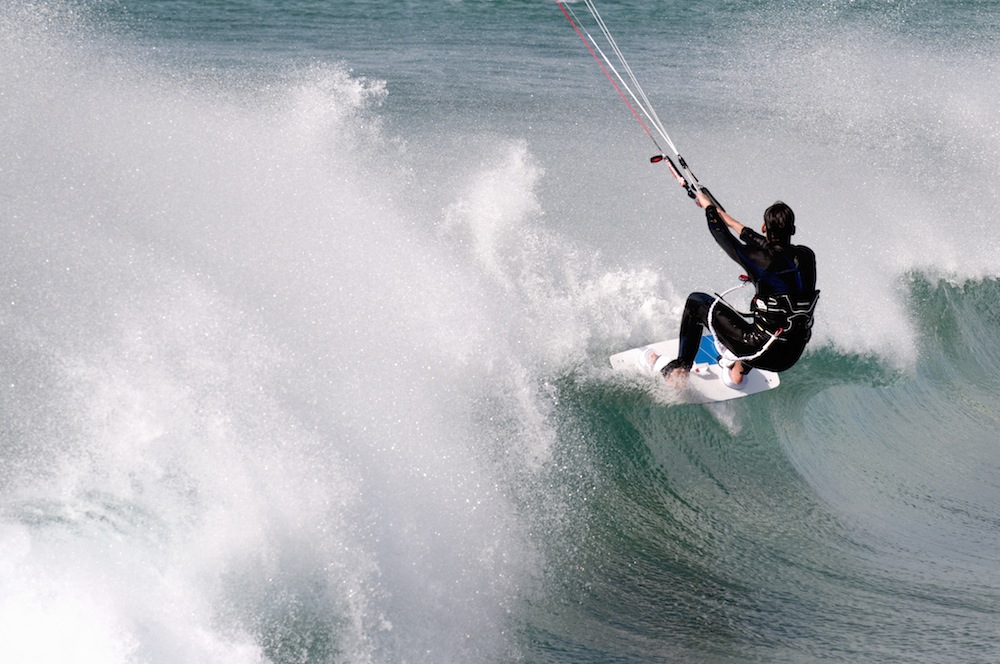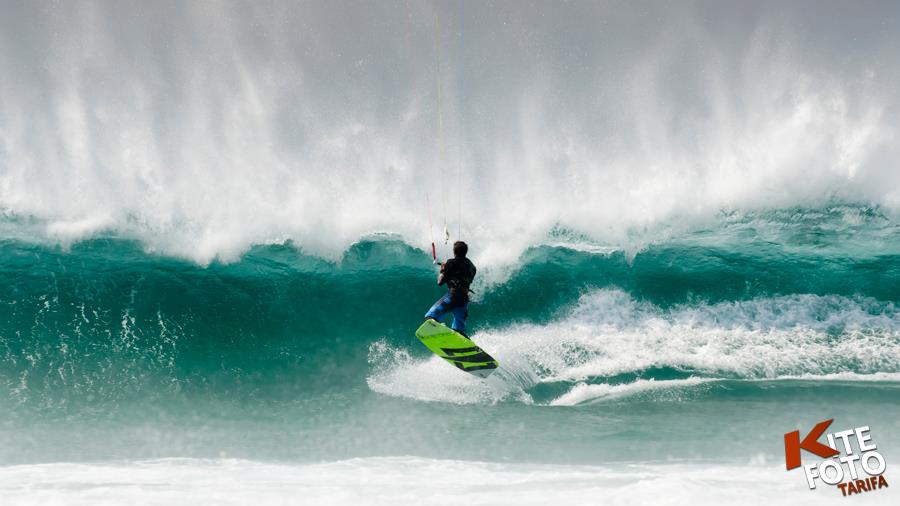

Nothing in the world quite compares to the feeling of catching your first wave. The surge of power through the board, the moment of silence when all that exists is you and the water, the thumping crash as you lean slightly too far and it all goes horribly wrong…or is that just me?
Wave riding requires a very different skill set to riding a twin tip board. Firstly there is the obvious difference between the shape of the board, which makes just riding up and down a very different experience. However wave riding also requires a different mentality – patience, aggression, harmony and sheer balls all have their place here. But the main feeling any long time wave rider experiences while surfing is a oneness with the wind and waves on a very spiritual level.
Surfing is damn hard
Surfing waves (in the traditional sense) is hard. Mainly because before you can actually get on the board and riding you need to learn how to ‘pop’ or stand up on the damn thing… which as you’ve probably guessed, isn’t that easy. One of the major advantages of kite surfing in waves is that you’re already stood up (most of the time) and so can forgo this painful process and just concentrate on having fun on the wave. Once on the wave the skill set required is so similar that many professional surfers are learning to kitesurf to give themselves more time riding thus improving their surfing performance. This means that if you do decide to take up (traditional) surfing, once you can get yourself stood up on the board the rest should be effortless.
Get out there
So now you’re all excited, how do you get started wave riding? While twin-tip boards can be used to sail on waves, they generally lack the volume to actually ‘catch’ a wave. This means that the easiest and probably the cheapest way to get started down the path of wave mastery is to simply dig out an old surfboard (or buy one cheap). You certainly do not need an expensive kite surfing surfboard to start having fun on the wave, any old surfboard will do. Personally I started an 8 foot mini-malibu board and I’ve seen guys taking out 10 foot Stand Up Paddle boards before. Of course you can invest in one of the specialist kite surfer surfboards and it will certainly make your ride more pleasant. But this is not a necessity for the beginner.

Getting on a bit?
Possibly the greatest advantage (at least to those getting on a bit) is that wave riding is not as physically demanding as freestyle. Now before we have an uprising, I’m not trying to say that you don’t have to be physically fit to wave surf…obviously you do, and the guys that ride big waves are amongst the fittest athletes on the planet. However surfing (on smaller waves) will not pull arms out of sockets as easily as handle passing will and is still a hell of a lot of fun. For this reason it’s not uncommon to see guys and girls of 60 + rocking up at the beach with their kite on their back and their surf board tucked under their arm, checking out the swell.
Adventure
Waves are generally shy creatures and like to stay out of the public eye, for this reason great wave spots have a tendency to be remote. Often just finding them requires a sense of adventure and a love for the wilderness. However the effort is nearly almost worth it, some of the most beautiful kite surfing spots in the world are wave destinations. Remote secluded bays with no one for miles, with just the surf and the wind (and occasionally your kite) pounding on the beach.
What…no Foot-straps?
One of the biggest concerns people have with wave riding especially when using an old surfboard, is the fact that they are often riding strapless (dedicated kite surfing surf boards do come with straps but many choose to remove them). This initially does take a little bit of getting used to. Once you’ve cracked it, it is a liberating and exhilarating feeling, which many claim is actually easier than riding with straps. The main difference comes when water starting. Given the extra volume and length of the surfboard it has a tendency to skew up wind whilst attempting to water start.
For this reason whilst water starting you need to pull in your back leg whilst pushing away with your front to force the board to point in a downward direction. I know, I know… this is exactly what you do on a twin tip, but believe me you have to really pull and push on a surf board, the longer the board the more exaggerated you have to make this.
Once you have mastered this technique actually riding is incredibly easy as the opposing forces of the wind and water actually glue you to the board (as I’m sure you’ll discover whilst you’re riding in very choppy conditions, this isn’t always 100% true, it is however, a well intentioned lie!).
Waves are big old boys…

There are no 2 ways about it, these guys can pack a punch. Under estimating the conditions or over estimating their own abilities are the biggest reasons for failure, embarrassment and injury amongst the newbie wave rider. The waves themselves have a tendency to sort the wheat from the chaff. As a simple rule if you can’t get out through the waves, you’re not good enough to be out there.
Many people new to wave riding may not have a clear idea of how powerful waves can be, even what would be classed as a small, 1m wave can have an incredible amount of power. Definitely enough to pick you up, dump you under and ditch you unceremoniously back on the beach with your kite wrapped around you. Definitely not a good look, and not one you need to experience, if you give the conditions the respect they deserve. Talk to locals, find out about local conditions, discover when high tide is, are there any rip tides or other hazards you need to be aware of? All this will boost your confidence and your ability to cope once you’re in the impact zone.
Making Friends With The Locals
Surfers are a territorial bunch but generally if they see you treating their spot with the respect it deserves…and a large part of this is taking the time to talk to them and garner some of their wisdom, they’ll help you out. If you just rock up at a spot, unfurl you kite and tear up the wave they’re waiting in the line up for, showing them no respect…expect pain.

Save Cash
Even if there are no waves having a surfboard in your quiver can give you other unexpected advantages. Because of a surf boards increased volume (floatiness), it will ride through lulls in the wind much more easily than a board of lesser volume and so can get you riding in much lighter winds. Thus armed with a surfboard and a twin tip board you can generally get away with less kites in your quiver than if you had just a twin tip, maybe needing only 2 kites to cover the same wind range as you would with just a twin tip and 3 kites. Boards cost less, get damaged less easily, and retain their value better than kites.
Another super article guys! Good work.
Cheers mate!! Glad you enjoyed it!